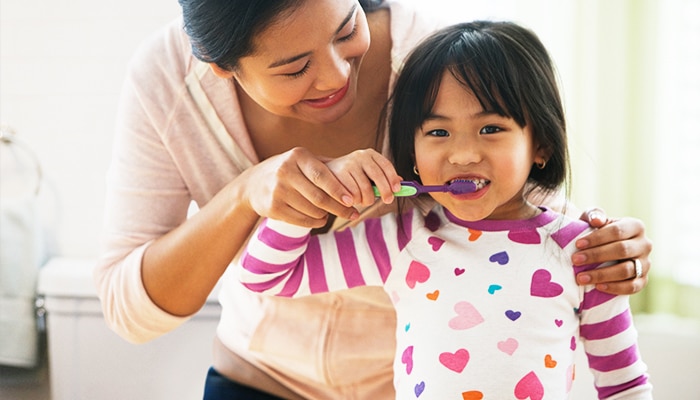While we believe that the books and resources recommended may be of value to you, keep in mind that these are suggestions only and you must do your own due diligence to determine whether the materials are appropriate and suitable for your use. PNC has no sponsorship or endorsement agreement with the authors or publishers of the materials listed.
HEALTHY ME

Keep Away Tooth Decay
Children will perform an experiment relating to tooth decay.

Lesson Objective
Children will learn about their teeth and good dental care, and they will perform an experiment about tooth decay.
Science
What You'll Need
- 6”–8” child-safe mirrors – 1 per child
- Hard-boiled eggs – 1 per child
- Cola – 1 cup per child
- 12 ounce clear cups – 2 per child
- Toothbrushes – 1 per child
- Toothpaste – 1 tube
- Water
What To Do
Note: This experiment will take 2 days to complete.
- Distribute mirrors to the children and have them examine their teeth.
- Discuss information about their teeth with the children (see Did You Know?).
- Display the hard-boiled eggs and compare them to teeth, explaining the shell on the eggs is white like teeth. Tell the children that they will be using eggs to perform an experiment.
- Have the children help you carefully place each egg in a cup and completely cover the eggs with the cola.
- Ask the children to make predictions about what might happen to the eggs (see Lesson Tips).
- The next day, remove the eggs from the liquid and discuss what happened (see Guiding Student Inquiry).
- Explain to the children that the cola stained the egg and this is like the way food can stain our teeth.
- Distribute a cup filled with water to each child and have them submerge the egg in the water. Explain that the water cannot remove the stain by itself.
- Distribute toothbrushes with toothpaste and direct the children to gently brush the egg to remove the stains.
- Discuss what might happen to our teeth if we were not to brush them. Explain that the stain on the egg is like the way our teeth can get decayed if we don’t take care of them.
Resources
Home School Resources
Home educators: use these printable lesson PDFs to teach this lesson to your home schoolers. They're available in English and Spanish.
Content Provided By
Common Core State Standards Initiative – These lessons are aligned with the Common Core State Standards ("CCSS"). The CCSS provide a consistent, clear understanding of the concepts and skills children are expected to learn and guide teachers to provide their students with opportunities to gain these important skills and foundational knowledge [1]. Visit the CCSS


